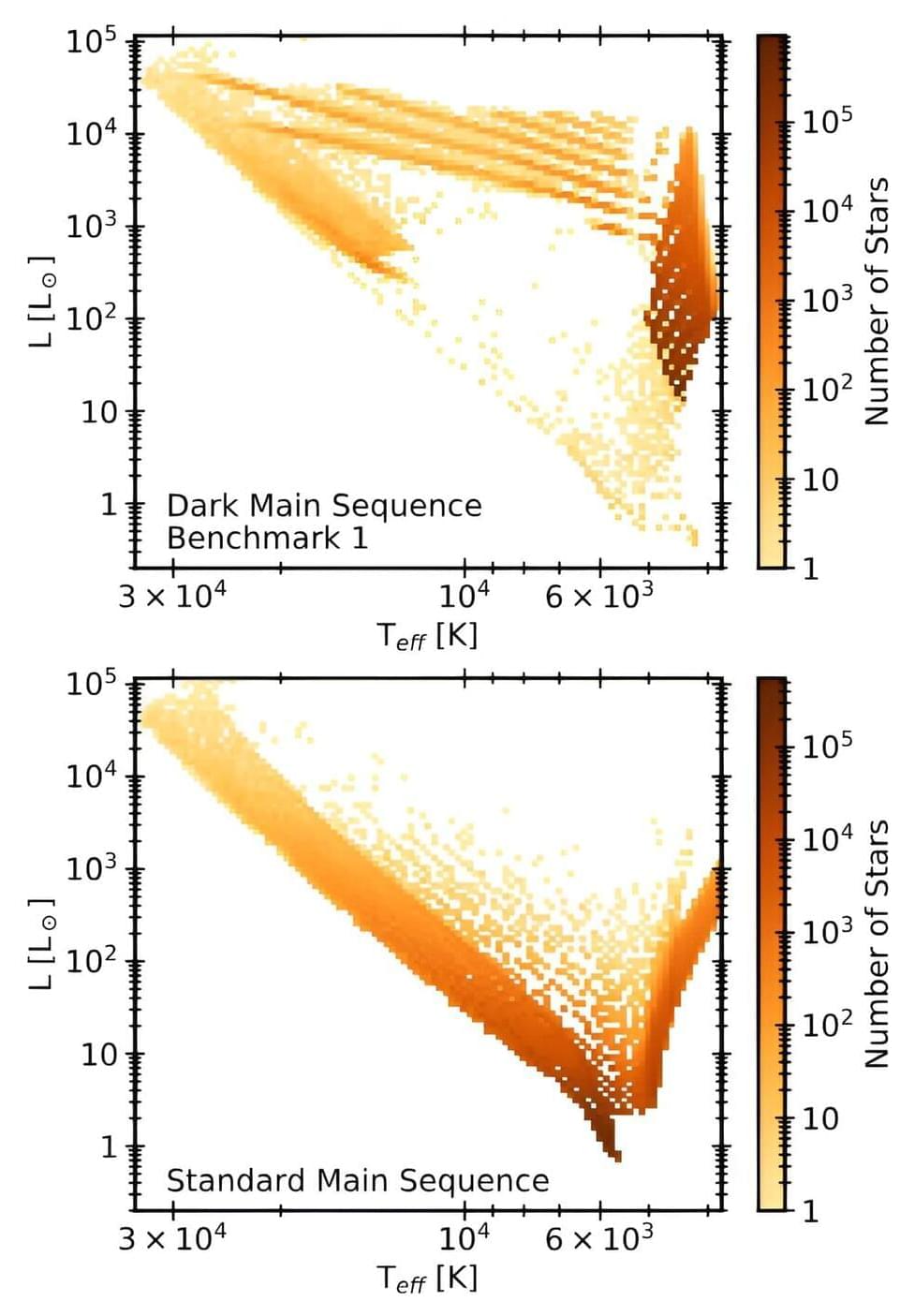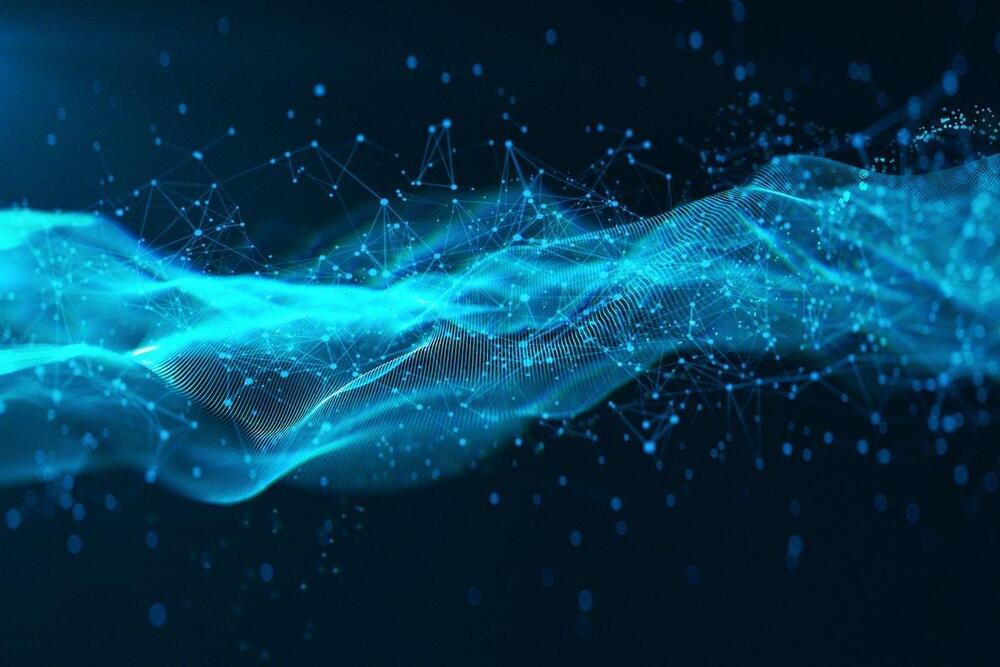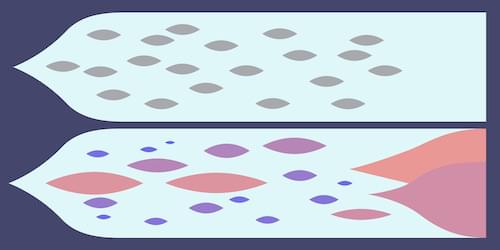
They calculated stellar populations without and with the presence of dark matter. With dark matter, more massive stars experienced a lower dark matter density, and hydrogen in their core fused more slowly and their evolution was slowed down. But stars in a higher dark matter density region were changed significantly—they maintained equilibrium through dark matter burning with less fusion or no fusion, which led to a new stellar population in an HR region above the main sequence.
“Our simulations show that stars can survive on dark matter as a fuel alone,” said lead co-author Isabelle John from Stockholm University, “and because there is an extremely large amount of dark matter near the Galactic Center, these stars become immortal,” staying forever young, occupying a new, distinct, observable region of the HR diagram.
Their dark matter model may be able to explain more of the known mysteries. “For lighter stars, we see in our simulations that they become very puffy and might even lose parts of their outer layers,” said John. She noted that “something similar to this might be observed at the Galactic Center: the so-called G-objects, which might be star-like, but with a gas cloud around them.”

















